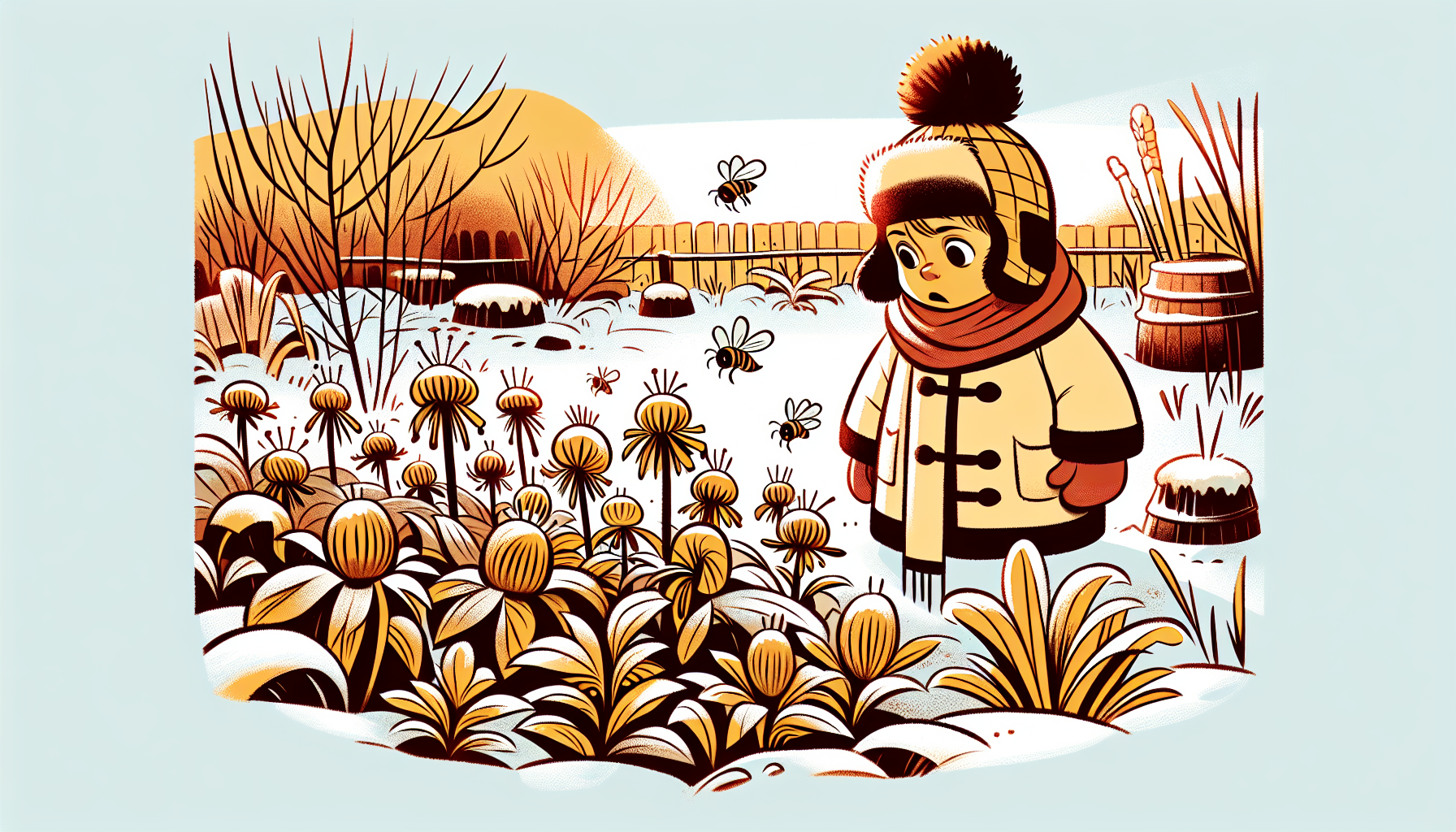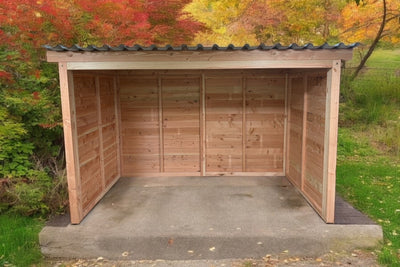Protect bees in winter: How to strengthen your garden in Switzerland
When the first frosts harden the vegetable patch and garden furniture disappears into the shed, bees are easily forgotten. This is precisely their most vulnerable phase - and protecting bees in winter lays the foundation for pollination and harvest in the coming year. Conditions vary greatly in Swiss gardens: winters are often damp and windy on the Central Plateau, long and snowy in the foothills of the Alps and at higher altitudes, and sometimes milder on the southern side of the Alps. With a few well-planned measures, you can create safe retreats, keep food sources available for longer and prevent diseases. In this way, you can strengthen biodiversity in your own garden and ensure that fruit trees, berry bushes and raised beds get off to a strong start in spring. This guide provides practical, tried-and-tested tips for everyday use - easy to understand, seasonal and with a focus on regional characteristics.
You will learn why protection in winter is crucial, how to assess the health of the colonies and which steps will have an immediate effect. You will also read what a bee-friendly garden looks like in winter and how to plan it sustainably.
Why protecting bees in winter is so important

The importance of bees for the ecosystem
Bees are much more than just honey suppliers: As the most important pollinators, they ensure yields of apples, cherries and berries as well as the diversity of many wild plants. Protecting bees in winter stabilizes the ecological balance in the garden and strengthens food chains for birds, insects and small animals.
In Switzerland's small-scale cultural landscape, honey bees and wild bees work together and increase diversity. Every garden that offers retreats and flowers strengthens regional nature and makes it more resilient.
Effects on plant diversity in the garden
A bee-friendly garden in winter pays off in spring: More pollination means more abundant flowering, better fruit set and more robust plants. Many hobby gardeners report more vital beds if they plan areas that are rich in structure and insect-friendly.
In winter, there is a lack of flowers and frost, wet conditions and breezes prevail - especially on the Central Plateau and in the foothills of the Alps. If you want to protect bees in winter now, you can compensate for these gaps and ensure a good starting phase in March and April.
How to protect bees in winter: Recognizing needs correctly
Signs of healthy bee colonies in winter
Honey bees form a compact winter cluster in the hive and generate warmth through muscle tremors. A calm, dense sitting pattern with a clear cluster shows a stable colony that you can carefully protect bees in winter without disturbing them.
On sunny days above 8 °C, individual bees often check the entrance hole. If such short excursions are completely absent or there are many dead bees in front of the hive, check the food, humidity and disease pressure.
Monitor the temperature and humidity in the hive
The temperature in the center of the cluster should be around 20 to 25 °C; at the same time, the climate must remain dry. High humidity promotes mold and weakens the immune system, which is why good ventilation and a dry location help to protect bees in winter.
Experienced keepers use hive scales or sensor systems to track temperature and humidity. If you work without technology, make sure there are no draughts, the lids are dry and the inside walls are free of condensation and only intervene if necessary is. Information and leaflets on Varroa winter treatment can be found at BienenSchweiz under Varroa control (source: bienen.ch).
Protect bees in winter: effective measures
Create suitable food sources
Honey bees need reserves from late summer and fall; beekeepers supplement with sugar solution or feed dough. In the garden, late-flowering species such as ivy, asters or stonecrop ensure the supply of energy and help to protect bees in winter.
Wild bees often overwinter in the garden as larvae and benefit from natural structures. Leave perennials standing, refrain from radical pruning and use leaf mulch - this preserves food remains and microhabitats.
Design winter quarters and nesting aids
Many solitary species spend the winter in tubes, stems or cracks. Setting up an insect hotel correctly in winter means: sheltered from the rain, sunny, out of the wind and in stable, pollutant-free hardwood with clean holes of 2 to 9 mm.
- Unmanaged corners with foliage, dead wood and dry stone walls
- Left standing, pithy stems of thistles, yarrow or coneflower
- Nesting aids made of hardwood, reeds and clay - do not drill into the front wood
Check the stability and dryness of the shelters in the fall. This way you can protect bees in winter without having to intervene later.
Protecting bees in the garden in winter: how to make it bee-friendly
Selecting the right plants for the cold season
Early nectar sources are crucial for wild bees to overwinter successfully in the garden and for colonies to start quickly. Early-flowering plants suitable for bees in Switzerland include winter heather, snowdrops, wild crocuses, winter aconites and especially willow.
- Winter heather (Erica carnea)
- Snowdrops
- Crocuses (wild forms)
- Winter aconite (Eranthis hyemalis)
- Willow as an early source of pollen and nectar
Plant bulbs in the fall and think about local, regional species. Agroscope provides information on flower strips and pollinator promotion with practical recommendations (source: agroscope.admin.ch) that help to protect bees in winter.
Designing retreats and nesting sites
A natural winter garden is deliberately left untidy. Wild corners with branches, sand lenses, dry stone walls and open, unsealed ground areas promote ground-nesting species and help to protect bees in winter.
Avoid using chemical pesticides and hobby fertilizers, the residues of which enter the soil via condensation. Gentle care, observation and robust varieties often replace spring treatment.
Protecting bees in winter: avoid typical mistakes
Incorrect maintenance of bee colonies
Opening the hive too often disturbs the microclimate and costs energy. Observe from the outside, check the flight opening, listen briefly to the wood and weigh the hive - this way you can protect bees in winter without losing heat.
Underestimated food gaps are a second classic problem, especially in long winters and at higher altitudes. Check the weight regularly and, if necessary, put on feed dough without tearing the colony apart.
Unsafe materials and pesticides
Cheap insect hotels with coarse or frayed holes, Tropical wood or plastic do more harm than good. Use untreated hardwood, reeds and clay in clean processing and you will protect bees in winter and secure the offspring.
Avoid copper salts and synthetic herbicides that pollute the winter ecosystem. Rely on compost, compost tea or liquid manure, which promote soil life and plant health.
Protecting bees in winter: sustainable planning
Long-term measures for beekeeping
If you keep bees yourself, register your apiary with the canton and comply with the bee inspection requirements. The Federal Food Safety and Veterinary Office provides information on registration and the epidemiological situation - an important basis for protecting bees in winter (source: blv.admin.ch).
You can achieve a lot without your own colonies: a flowering concept from March to October, wildflower meadows, deadwood piles and structurally rich hedges support bees all year round. Schools, municipalities and housing estates benefit in part from support projects and regional seeds.
Cost-benefit analysis of bee-friendly approaches
Most steps cost little: a good insect hotel, bulbs for early bloomers and regional seeds often cost between CHF 100 and CHF 150. This creates the basis for protecting bees in winter and stabilizing yields in the long term.
The benefits are clear: more pollination in the vegetable garden, healthier soil, less pest pressure and a lively garden for children and adults. In some regions, there are also contributions for hedges or flower meadows.
Consciously planning close to nature creates safe winter quarters and a resilient garden for generations.
Conclusion: Protecting bees in winter - your commitment counts
Bees don't just need attention in summer. If you want to protect bees in winter, you can rely on protected shelters, early bloomers and natural structures - easy to implement and highly effective.
Attentive observation, clever plant selection and the avoidance of chemicals create real added value for the ecosystem. In this way, you can promote nature on your doorstep and send a visible signal that you are taking responsibility.
Start small - with a handful of crocuses, a leaf-covered bed and a dry location for the insect hotel. Start a garden project now and create more habitat - for buzzing, color and diversity all year round.


